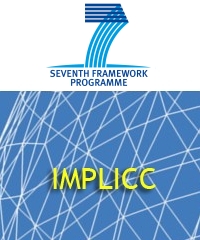Given the extent of the current discussion on geoengineering options to limit climate change, it is necessary to study the possible efficiency, risks and implications related to these options. Numerical models are a preferred tool for performing such initial scientific studies, since without further information, any large-scale experiments on the atmosphere would raise serious ethical concerns. We will perform model studies for three options which have been suggested to engineer solar radiation. We will focus on
- space borne reflectors (placed at the Lagrangian point between the Earth and sun) [Work Package 2],
- sulphur injections into the stratosphere [Work Package 3], and
- engineering of low level marine clouds through sea salt injections [Work Package 4].
Our approach will be to use state-of-the-art Earth system models that (in particular) incorporate interactions between aerosols, radiation, clouds, air chemistry, the terrestrial biosphere, and the carbon cycle. Because of the limits and uncertainties of numerical models, we propose to perform numerical studies in a multi-model setup where differences between the models can be taken as a first estimate of the uncertainty of our results. Our simulations will be based on scenarios that are currently being prepared and discussed for the fifth assessment report of the IPCC. Our objectives concerning the three methods mentioned above are to estimate their effectiveness and their side effects, but also to contribute to a better understanding of their economic implications.
Specifically, we attempt to answer the following questions:
a) Effectiveness
- How can geoengineering be applied in an efficient way? (At which altitude and geographical location should sulphur be injected into the stratosphere? Where should additional condensation nuclei be injected into the troposphere?)
- What is the amount of geoengineering necessary to limit the future global average temperature increase to a given target level, e.g., a maximum of 2 degrees?
- What is the radiative forcing efficiency (per mass emitted) and global “cooling” potential of the different substances suggested for geoengineering? What are the associated indirect radiative effects? Will the forcing efficiency of a given substance be different in a different (future) climate (e.g. under future levels of GHGs)?
- How quickly can the effect of a given geoengineering method be reversed in case of undesirable side effects?
b) Side effects
- How will stratospheric ozone levels and their future evolution be affected by stratospheric sulphur injections?
- What are the effects of a massive input of sulphur or chlorine species on tropospheric chemistry (acid rain, photo oxidant levels)?
- What are the spatial effects of eventually inhomogeneous manipulation of the radiative budget on hydrology (evaporation and precipitation patterns) and the terrestrial biosphere?
- What is the effect of an increase in diffuse radiation due to higher aerosol loads on vegetation?
- How do other photochemical processes in the troposphere and stratosphere change in response to the introduction of a given geoengineering substance (e.g., changes in photolysis rates, decreases in N2O and CH4, changes in UV flux due to the presence of SO2)?
- Can we identify any unexpected significant changes in the climate system in the course of the continued application of geoengineering methods together with high GHG levels?
- What are the risks associated with a sudden switch-off of geoengineering (e.g., overshooting)?
c) Economical implications
- Based on the present state of knowledge, what are the ranges of costs for implementing geoengineering technologies?
- How are the benefits and risks in terms of reduced climate change distributed across world regions, and what are the uncertainties about these benefits?
- How do the benefits and costs of geoengineering compare with the costs and benefits of emissions control?



